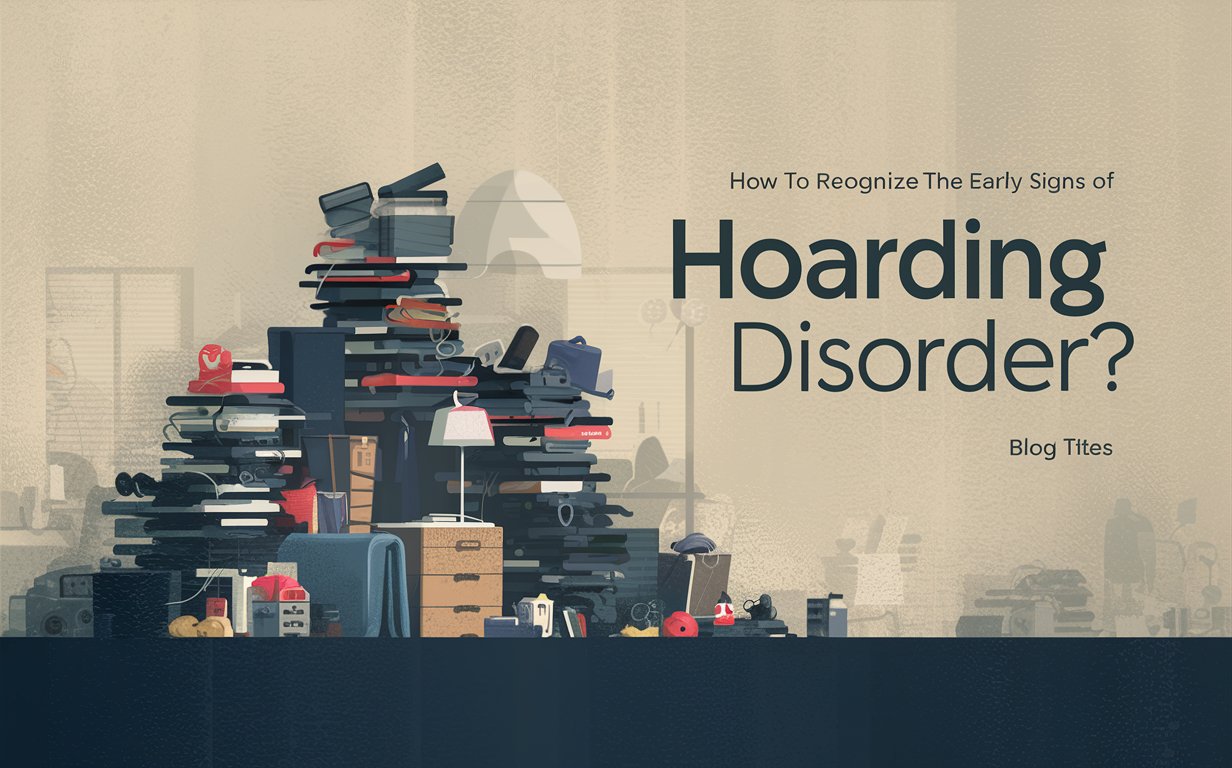Many people don’t realize that hoarding extends far beyond simply collecting items or being messy. It’s a complex behavioral pattern that involves intense difficulties in parting with possessions, regardless of their actual value. What starts as seemingly innocent habits – saving old newspapers, holding onto broken items, or having trouble organizing belongings – can gradually evolve into a serious condition that affects mental health, physical safety, and relationships.
Early identification plays a crucial role in addressing hoarding behaviors effectively. The signs often appear in various aspects of daily life, from how someone manages their living space to how they interact with others and handle everyday decisions.
The Signs You Need To Look Out For
Difficulty Discarding Possessions
One of the earliest signs of hoarding disorder is an inability to throw away items, regardless of their actual value. Professionals often observe this as a primary indicator that someone might need support.
When someone struggles with discarding possessions, they typically:
- Keep items with little to no monetary value, like old newspapers or broken items
- Show visible distress when asked to throw things away
- Make frequent statements like “I might need this someday”
- Have difficulty organizing possessions and deciding where things belong
The behavior becomes particularly noticeable when storage spaces fill up, yet the person continues to hold onto items despite having no practical use for them. This resistance to discarding goes beyond normal collecting habits and often requires professional intervention to address effectively.
Clutter That Interferes with Living Spaces
As hoarding behaviors progress, living spaces become increasingly compromised. What starts as manageable clutter gradually transforms into a significant obstacle in daily life. Hoarding assistance specialists frequently observe how clutter takes over essential areas of the home, creating both practical and safety concerns.
The impact becomes most visible when:
- Rooms become unusable for their intended purposes
- Only narrow pathways remain through stacks of items
As interior spaces fill completely, the accumulation typically expands beyond the house into garages and vehicles. One of the most challenging aspects is that important items become lost among accumulated possessions, creating a cycle where new replacements are purchased for things that can’t be found. This interference with daily activities often becomes the first visible sign to family members and friends that professional support may be needed.
Emotional Attachment to Possessions
People developing hoarding tendencies often form unusually strong emotional bonds with their belongings. These connections go beyond normal sentimental attachment, transforming everyday items into objects of significant emotional value.
Common signs of this excessive emotional attachment include:
- Feeling responsible for objects as if they have feelings
- Becoming visibly distressed if someone touches or moves items
This deep emotional investment often leads to significant resistance when others try to help organize or declutter spaces. The individual may spend hours examining and organizing items without actually removing anything, treating each object as if it holds special significance. The attachment becomes so intense that even suggesting the removal of seemingly worthless items can trigger genuine emotional distress.
Social Isolation
It starts subtly. A canceled dinner here, a rescheduled visit there. Soon, what was once an active social life transformed into a pattern of avoidance and withdrawal. The home, rather than being a place to welcome friends and family, becomes a source of shame and anxiety.
Relationships suffer under the weight of these changes. When family members express worry about cluttered spaces or try offering help, their concerns are often met with defensiveness or complete shutdown. The simple suggestion of organizing can spark heated arguments or lead to total communication breakdown.
Eventually, many individuals stop participating in social activities altogether, creating a bubble of isolation that reinforces their behaviors and makes it increasingly difficult to seek help.
Compulsive Acquisition
The urge to acquire more items knows no bounds. Despite crowded spaces and dwindling storage, the drive to collect persists – whether it’s shopping sprees at discount stores or rescuing discarded items from neighborhood curbs.
Something switches in the brain when faced with “bargains” or “free” items. That old chair someone left out? It might be perfect after a little fixing up. Those sale items at the store? Better grab extras – you never know when they’ll come in handy. Before long, shopping transforms from a normal activity into an irresistible compulsion.
Take note when someone you know:
- Buys multiples of items they already own “just in case”
- Can’t pass by free items without taking them home
What’s particularly troubling isn’t just the constant flow of new items, but how each acquisition provides temporary relief – a brief moment of joy that quickly fades, leading to the need for another purchase, another find, another addition to the growing collection.
Perfectionism and Indecisiveness
Behind the visible chaos of hoarding often lurks an exhausting pattern of perfectionism. A simple task like choosing what to keep becomes an overwhelming ordeal. The mind races: “What if this document contains something crucial? What if I need this receipt five years from now? Maybe I should create a special filing system first…”
Telling signs emerge in daily life:
- Tasks remain perpetually unfinished, waiting for the “perfect” solution
- Simple organizing projects stretch into weeks or months
The cruel irony? This perfectionism rarely leads to perfect results. Instead, it paralyzes action, leaving spaces more cluttered while the person wrestles with increasingly complex decisions about where things should go or how they should be organized.
Taking the First Step
Recognizing these signs in yourself or someone close to you isn’t about judgment – it’s about understanding. Early awareness opens doors to positive change. Resources and mental health professionals can provide the support needed to address these challenges before they overwhelm daily life.
Change doesn’t happen overnight, and it doesn’t have to. The journey begins with small steps.
